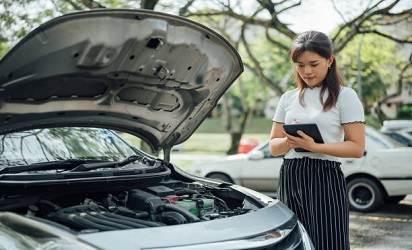Introduction
Auto insurance is a fundamental aspect of responsible car ownership. It provides financial protection in case of accidents, theft, or damage to your vehicle. Understanding the various components of auto insurance coverage is essential to ensure you have the right protection for your needs. In this article, we’ll explore the different aspects of auto insurance coverage, helping you make informed decisions to safeguard your vehicle and finances.
1. Liability Coverage
Liability coverage is typically the foundation of any auto insurance policy. It is divided into two main categories:
- Bodily Injury Liability: This covers medical expenses, rehabilitation costs, and legal fees if you’re at fault in an accident that injures others. It also provides compensation for pain and suffering and lost wages to the injured party.
- Property Damage Liability: Property damage liability covers the cost of repairing or replacing another person’s property, such as their vehicle or damaged structures, when you’re responsible for an accident.
Liability coverage is often expressed with three numbers, such as 100/300/50, where the first number represents the maximum bodily injury coverage per person, the second number is the maximum coverage per accident, and the third number represents property damage coverage.
2. Collision Coverage
Collision coverage helps pay for repairs to your vehicle when you’re involved in an accident, regardless of who is at fault. This coverage is particularly important if you have a newer or more valuable vehicle, as it can help protect your investment. You’ll typically be responsible for paying a deductible before the insurance kicks in.
3. Comprehensive Coverage
Comprehensive coverage goes beyond collisions and covers damage to your vehicle from non-collision incidents, such as theft, vandalism, natural disasters, or hitting an animal. Like collision coverage, you’ll have to pay a deductible before the insurance covers the cost of repairs or replacement.
4. Personal Injury Protection (PIP)
Personal Injury Protection, or PIP, covers medical expenses, lost wages, and other expenses for you and your passengers, regardless of who is at fault in an accident. PIP coverage is especially important in no-fault insurance states, where it’s mandatory.
5. Uninsured and Underinsured Motorist Coverage
Uninsured Motorist (UM) and Underinsured Motorist (UIM) coverage protects you when you’re involved in an accident with a driver who has no insurance (UM) or insufficient insurance to cover your expenses (UIM). It helps pay for medical bills, lost wages, and other damages.
6. Medical Payments Coverage
Medical Payments coverage, often referred to as MedPay, helps cover your medical expenses and those of your passengers, regardless of who is at fault. It can be used alongside health insurance to offset co-pays and deductibles.
7. Rental Car Reimbursement
Rental Car Reimbursement coverage provides reimbursement for the cost of renting a vehicle while yours is being repaired or replaced due to a covered claim.
8. Towing and Labor Coverage
Towing and Labor coverage reimburses you for expenses related to breakdowns, flat tires, dead batteries, and other non-accident-related vehicle issues that require roadside assistance.
Conclusion
Auto insurance coverage is a vital aspect of responsible car ownership. The right coverage can provide you with financial protection and peace of mind in case of accidents or unexpected events. When selecting auto insurance, consider your unique needs, the value of your vehicle, and your budget. Review your policy regularly to ensure it still meets your requirements, and don’t hesitate to consult with insurance professionals for guidance. With the appropriate auto insurance coverage in place, you can drive with confidence, knowing you’re prepared for whatever the road may bring.
